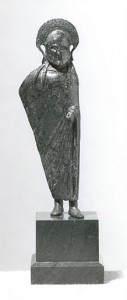Spartan Classes
The class and social structure of Sparta was very regimented similar to the way they treated everything, methodical and ordered. The Spartan people or the Lacedaemonians as they would also be known divided their social structure into three basic classes. The highest of this class was of course the full citizens the Spartans, who maintained the control over the state.
The Spartiates Proper the full citizens of Sparta
The full citizens of Sparta, the Spartiates Proper were few in number but high in status. Sitting at the very top of the social classes the full citizens were afforded many rights, but of course their life dedicated to physical perfection and training would be viewed by some as a punishment.
Able to vote on political matters, own Helots and have their land farmed for them, the Spartiates Proper would not partake in manual labour unless they desired and even if they did it would likely be frowned upon. The Spartiates Proper were essentially the upper class of ancient Sparta, but their life while better than Perioeci and the helots, was not the same as the upper class of ancient Greece.
The Perioeci the second class citizens
The Perioeci were essentially the second class citizens of Sparta, free men and women but non citizens of the state of Sparta. The Perioeci were afforded the luxury of free movement in Sparta and outside of the state also. Typically, the Perioeci would live on the fringes of the Spartan area and were free to own land, become hoplites and even join the navy. The Periocei were however not allowed involvement in the politics of Sparta, or even to marry one of the Spartiates Proper.
The Helots the state owned serfs
The lowest of the classes in ancient Sparta was the helot class. While we have lots of additional information on the helot class its worth explaining their place in the social rankings of the Spartan society.
The Helots were thought to have originally come under the Spartan rule when the Spartans conquered the Messenians after the First Messenian War. The helots would resent this rule, having multiple uprisings but their treatment for state owned serfs was generally considered to be better than most. The helots were allowed to live in their own accommodation, allowed to keep some of their farming yields and allowed to have their own families, although mixing with the Spartiates proper was not allowed.
The class of ancient Sparta in summary
Sparta in many ways had had a similar but unique class structure to much of ancient Greece, but the range of their classes was much smaller. The lower end of the class, the helots, received what is thought to be better treatment than their peers in Greece, and the Spartiates Proper didn’t quite live the high life in the same way the upper class of Athens would. The class structure of ancient Sparta is just another reason that makes this ancient state so interesting.
‘We considered the Spartiates a strange bunch, they didn’t know how to control their slaves, and we found it rather shocking. I mean what member of the upper class would allow their slaves such freedom, its ridiculous, we would have punished those slaves till they respected us as their rightful masters, no revolt of that kind would happen on our soil.’
